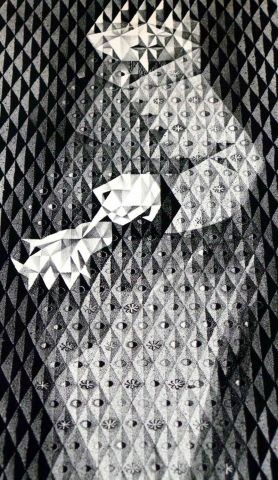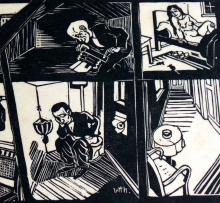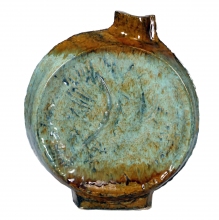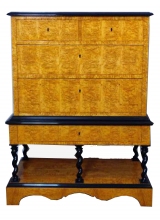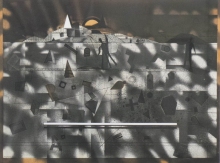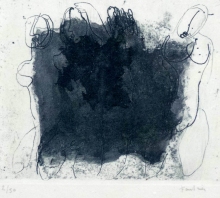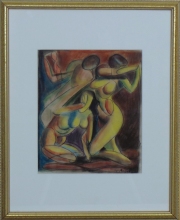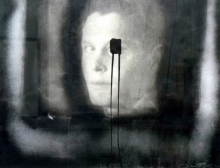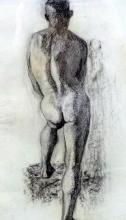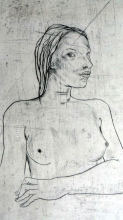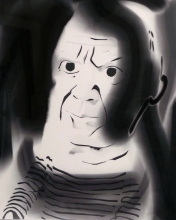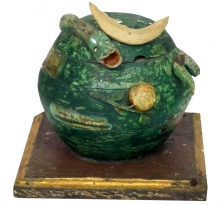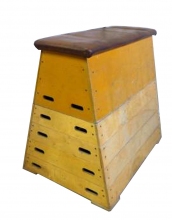June Wayne was born in 1918 in Chicago. From the outset, she was interested in art and keenly observant. At the age of 5, she recognized that the dots of color in the comic strips, when fused by vision, produced secondary hues and began to make drawings composed entirely of colored dots, a sort of self-taught French Post-Impressionist in the manner of Seurat and Signac. At the age of 9 she began a project that would occupy her into her late teens,
illustrating the Rubaiyat of Omar Khayyam. Her dedication to a single project would inform her work for the rest of her life.
Bored with high school, she dropped out. In 1934, when she was 16, in order to prove to her mother that she was nonetheless an educated person, she took and passed the entrance examinations to the University of Chicago. But she did not enter school. Within a year she had a one-person show of paintings at the Boulevard Gallery in Chicago. As a result of this show, she was invited by the Mexican Government to paint in Mexico. The invitation resulted in a well
received 1936 exhibition at the Palacio de Bellas Artes in Mexico City. She was eighteen years old.
Over the course of the next five years, she worked, first, in the art galleries of Marshall Field and Company in Chicago, then on the easel painting project of President Roosevelt's WPA Art Project, then as a costume jewelry designer and stylist in New York City, and then as a writer for WGN radio in Chicago. But by 1950 she was working virtually full time as an artist.
By the time she acquired her Tamarind Avenue studio in Los Angeles in 1958, she was one of the most respected artists in the United States. In 1952, the Los Angeles Times had named her Woman of the Year for Meritorious Achievement in Modern Art, and her work was in most of the major collection in the United States. Worried about the moribund condition of lithography in this country, she wrote a proposal to the Ford Foundation in 1959 requesting support to restore lithography by training master-printers to work with U.S. artists. At first cautious, the Ford Foundation granted her $165,000 in 1960 to test her plan. In 1962, it awarded her $400,000 more and in 1965 another $700,000 to maintain the workshop through 1970.
Under her direction, Tamarind Lithography Workshop became one of the most important focal points of a general revival of printmaking in the United States. In 1969, as she prepared for the transfer of Tamarind to the University of New Mexico, she began collaborating with French tapestry weavers. Ever since, she has continued to push the limits of almost all art media, constantly creating new techniques and forms. She was spurred on particularly by the feminist movement, which she anticipated to an extraordinary degree, and which validated her own career path. But her art was stimulated especially by discoveries in modern science, especially space exploration, the intellectual excitement of which has driven Wayne to remain one of the most innovative artists of the day.


